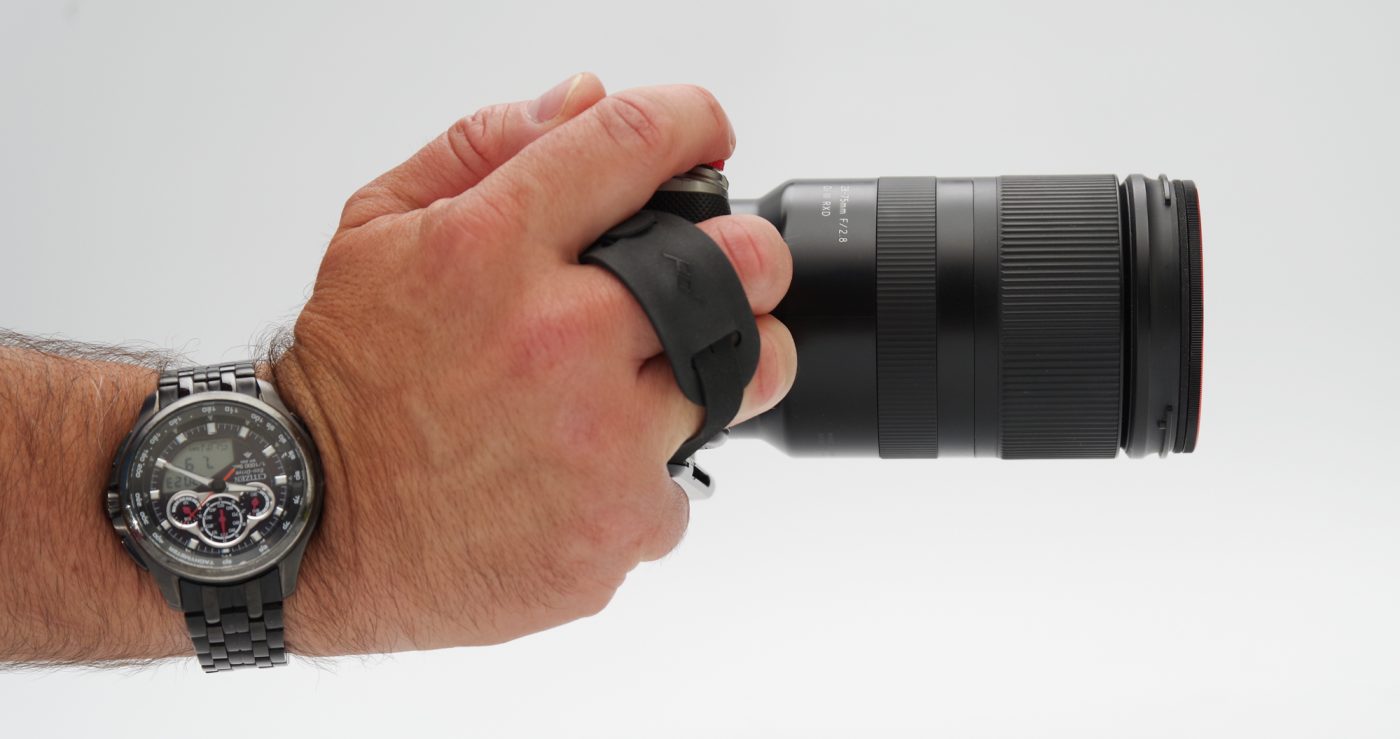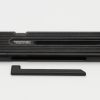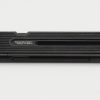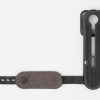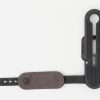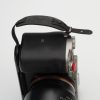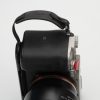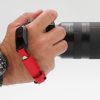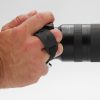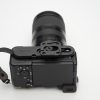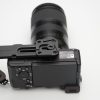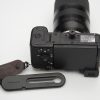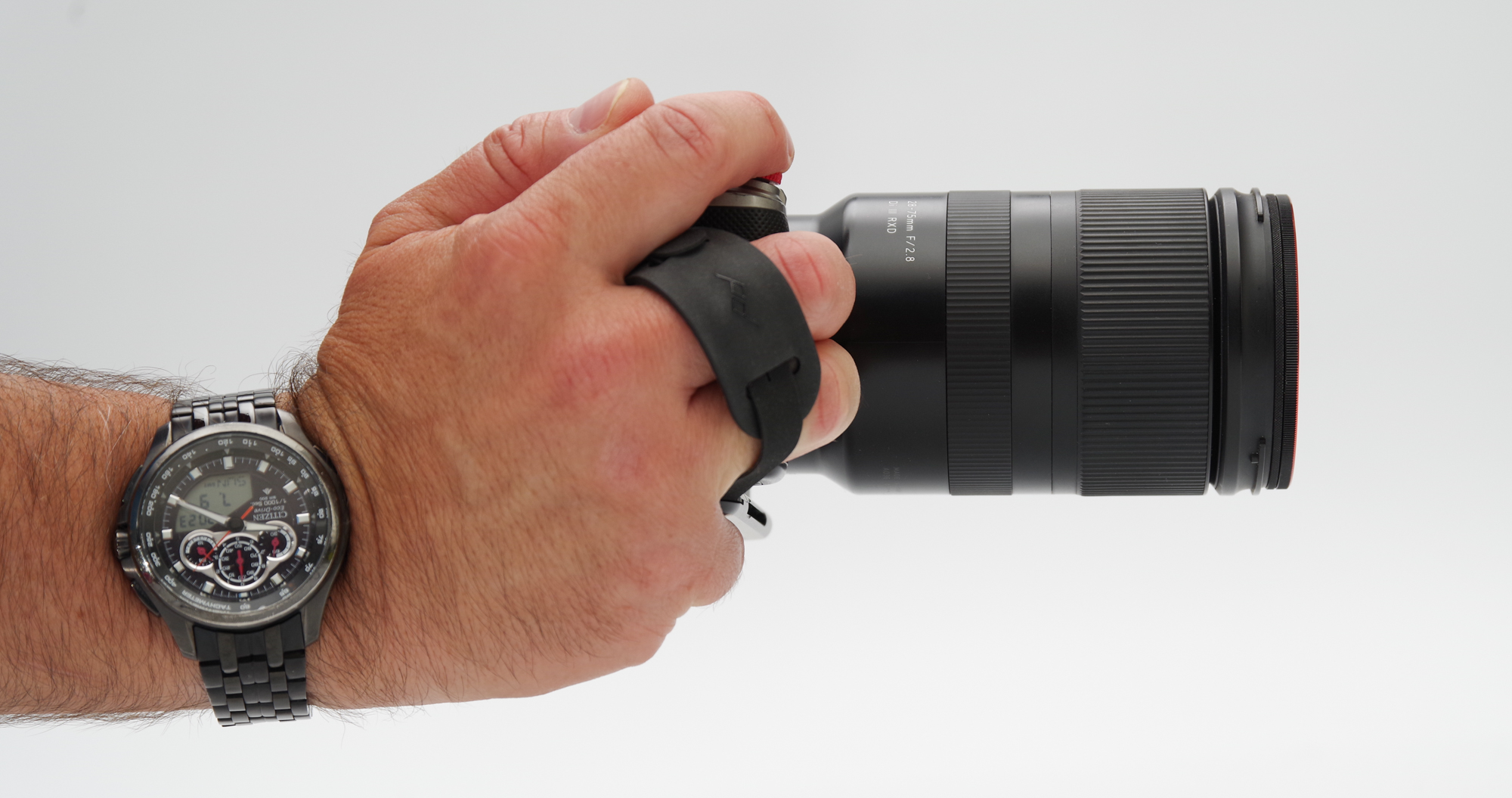Today we present the new Micro Clutch from Peak Design.
In Spring 2023, Peak Design launched a new Kickstarter campaign, this time for a single product: the Micro Clutch. For Peak Design, a “clutch” is a hand strap, as opposed to a neck or wrist strap. In fact, there is already a Clutch which was designed a few years ago and is intended for DSLRs and larger cameras. With the advent of mirrorless and high-quality compacts, the Clutch was seen as being too large for most. As such, Peak Design created and released the Micro Clutch.
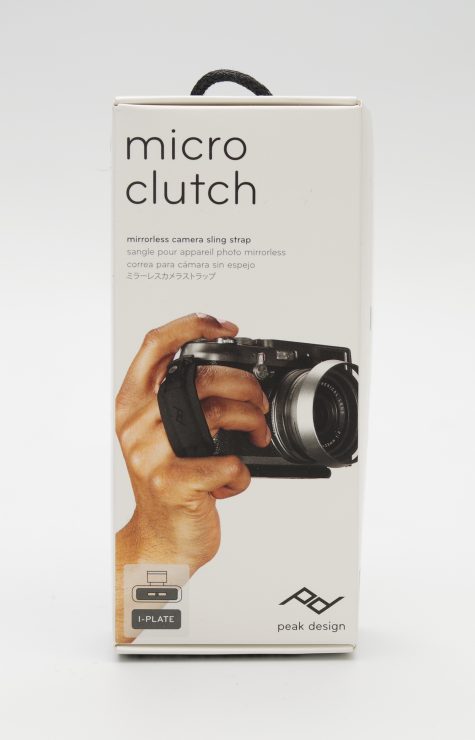
Peak Design has grown tremendously since their first Kickstarter campaign in 2011. The company now has a complete and mature lineup of products for photographers, travelers, as well as mobile accessories. Despite not absolutely needing to from a financing standpoint, the company relies on Kickstarter to launch most of its products. This is, according to Peak Design, to remain close to customers and their needs.
Physical Description

For a simple hand strap designed for smaller camera, the Micro Clutch is surprisingly complex. It is made of two parts: the strap itself, attaching to the top right lug on the camera, and a bottom plate. This plate can be I or L shaped, depending on the size of the grip on your camera. The company provides a checklist to identify which model is the best fit, although there is little risk in using the I shape on a camera with a larger grip. I am testing with the Sony A7C, and Peak Design recommended the I shape.
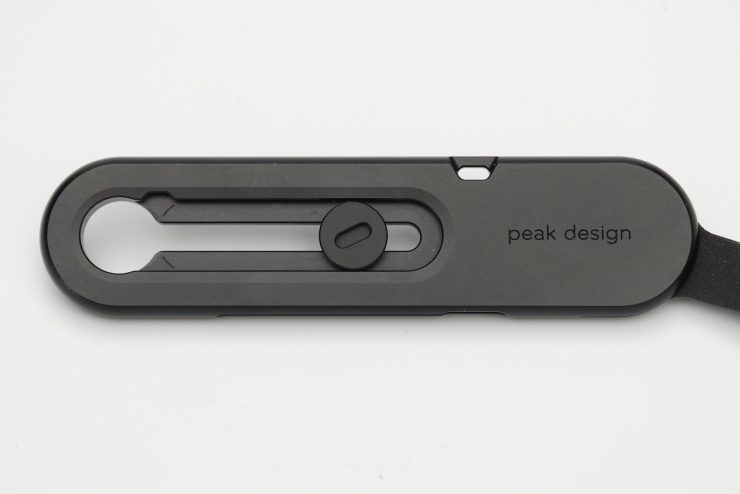
The bottom plate is large, covering most of the base of the camera. Peak Design claims this is because most cameras are now too small to hold properly with a more traditional hand strap.
The bottom plate screws into the tripod mount via the supplied screw, which has a proprietary slot. This is to keep the plate’s profile as slim as possible. A lever tool is supplied and hides in a dedicated holder, held in place via magnets. There is a small lug on the bottom plate to accept Peak Design’s Anchor system.
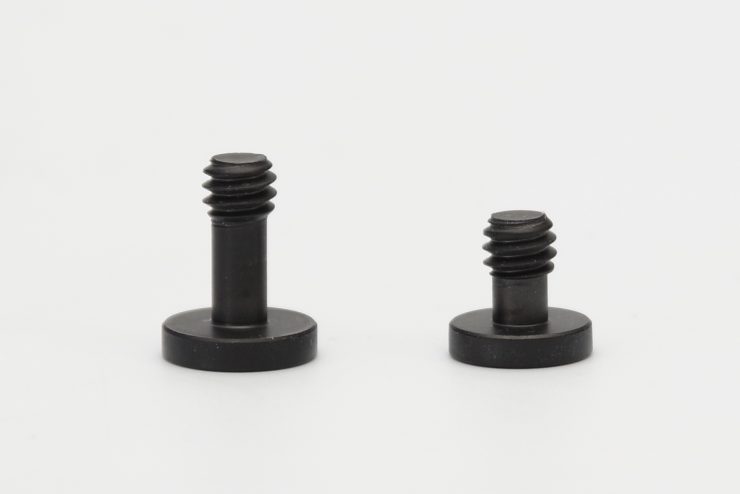
A longer screw is supplied, along with an adapter version of Peak Design’s square tripod plate.

This plate cannot be used without the Micro Clutch’s bottom plate, as it has ridges which slide (again with the help of magnets) in the funnel at the bottom of the plate.
To use the dedicated tripod plate, the longer screw is required, otherwise the shorter one should be used.
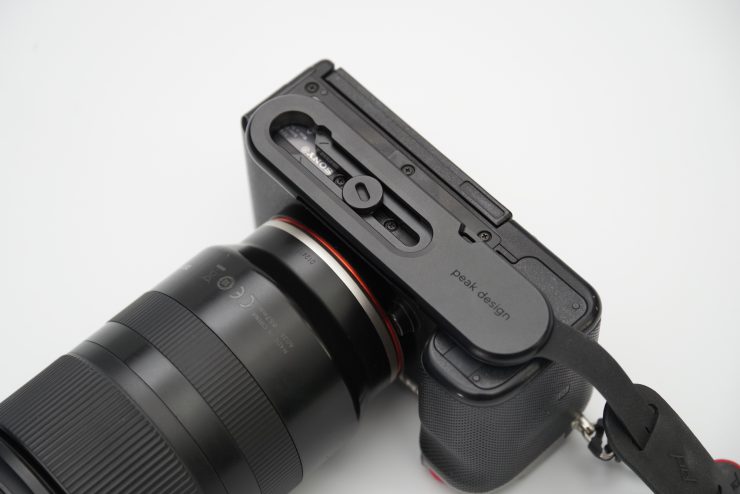
The bottom plate is large enough to cover most of the bottom of the camera. As such, it will overlap with the battery compartment. This seems like a surprising design choice. Thankfully, the always-present lever requires only about a half-turn to loosen the screw and let the user rotate the plate out of the way. An extra step, to be sure, but one which only takes a few seconds. The bottom plate can be swiveled out of the way, or taken off completely while keeping the screw in place.
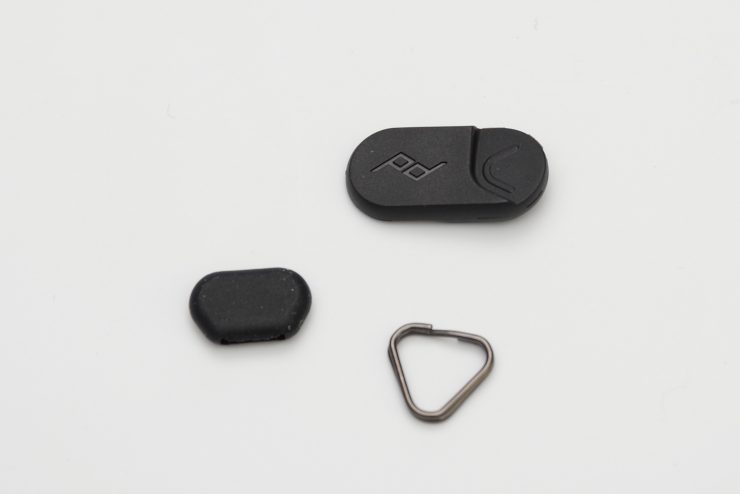
The strap itself attaches easily to most cameras. For cameras with only a hole and not a wider lug, the Micro Clutch comes with a triangular split ring, an installation tool and rubber scratch protection.
The strap’s length can be adjusted so it rests exactly where it should and has the correct length. Adjustments require a bit of fiddling, but once set it stays in place. The padded section won’t slide or move as it is fixed to the rest of the strap.
In Use
The Micro Clutch is intended to be used with two fingers under the strap. The bottom finger curls underneath the camera, and the index is free to reach buttons on the camera itself. This way of holding the camera will be new to most people, and is in line with the idea of the Micro Clutch being designed for smaller cameras. Trying to fit three fingers inside the strap won’t work; the index won’t be able to move freely.
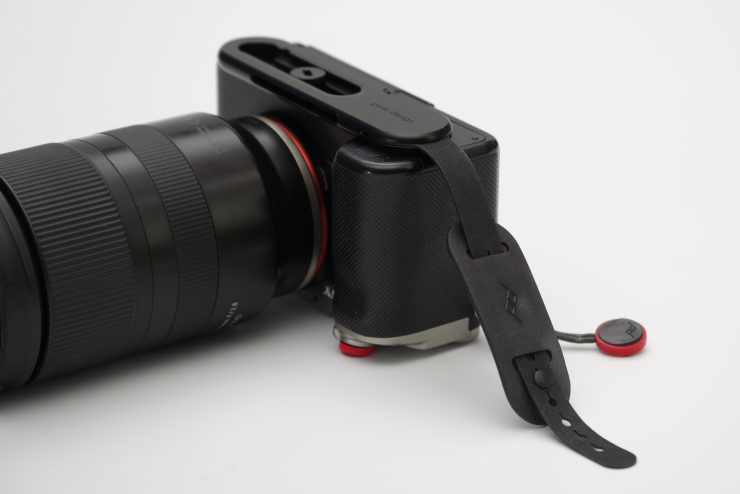
After using it extensively, I find the Micro Clutch to be quite stable and comfortable. I realized that it is important to fine-tune the length of the strap. When it’s too tight, the sides of the padding will dig uncomfortably in the fingers’ skin. If it’s too loose, it will force the hand into a weird angle. Taking the time to adjust the length at its optimal length will ensure good comfort. This is a “set it and forget it” situation. When properly adjusted, it provides a good grip.
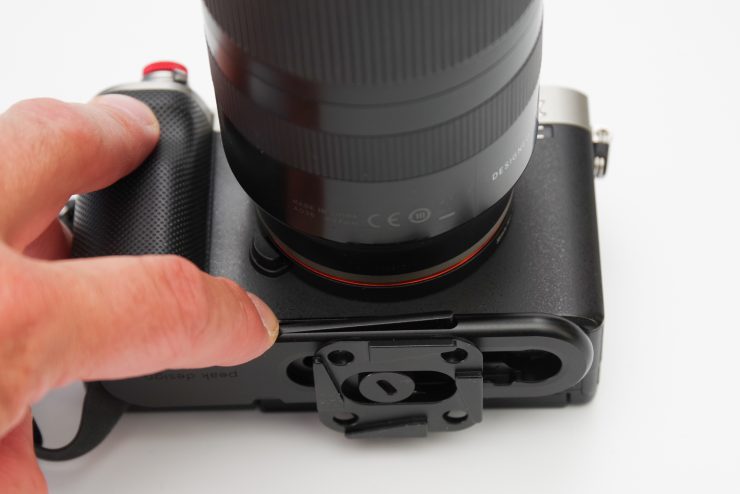
Adjusting the position of the bottom plate is easy, with or without the added tripod plate. Taking out the lever from the plate is also easy: simply push on the head and the handle pops out. The tool fits perfectly in the screw’s slot and is strong enough to provide good torque. A flathead screwdriver of the right size could replace it in a pinch but the slot is a proprietary format. The included tool is held in place securely thanks to the magnets but loosing the tool will lead to headaches until a replacement is procured.
Inserting the tripod plate is also easy. It slides into the funnel on the bottom plate, so it won’t ever fall off or rotate separately from the bottom plate. Thanks to the large surface area of that plate, the grip is excellent and the plate never rotated during use.
Commentary
I confess that, when I saw the Micro Clutch design, I really wasn’t sure about it. It felt over-designed, a solution looking for a problem. I’ve created my own clutch-style hand strap a few years ago with two Peak Design Anchor Links and a strip of leather (I have a similar one, slightly longer, for my full frame Pentax K-1 ii DSLR).
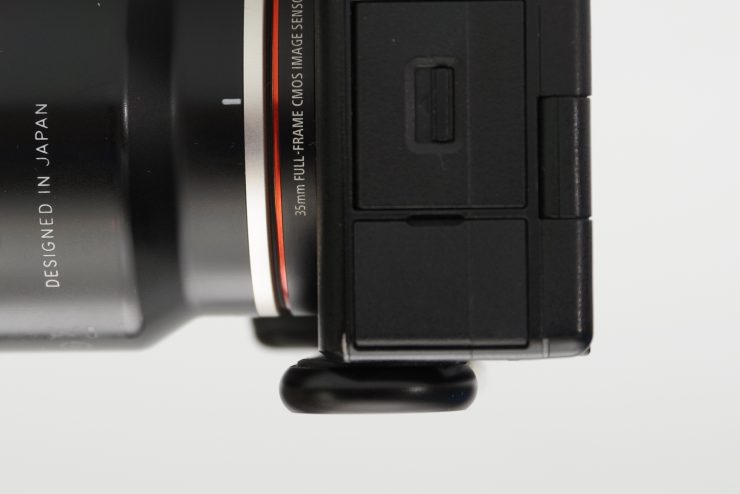
I also wasn’t convinced about the rationale behind the “mirrorless cameras are too small, let’s make them bigger by placing a bar at the bottom”. It is not Peak Design’s fault in this case, but I’d rather have the camera manufacturers use that real estate to improve ergonomics rather than be forced to use a third-party solution to make the camera large enough for regular hands. Reading social media, a lot of users had the same pre-conceived opinion.
All of this was before I opened the Micro Clutch’s packaging. Sure, the reasoning above is still (mostly) valid, and sure I still like my custom-made hand strap. But this time again, it’s obvious that Peak Design put a lot of thought in creating a product which, in the end, plainly works.
The Micro Clutch has the same build quality as other Peak Design products and is backed by the same lifetime warranty. The shapes, angles, materials all show the effort which was put into the design.
Loosening the bottom plate to reach the battery door is an extra step, but not a long one by any means. This bottom plate is thin (which is the reason why it uses a proprietary tool, as regular HEX tools are too thick to fit inside the plate). The ability to use Peak Design’s excellent camera plate, which I have on each of my cameras, is welcome. When adjusted properly, the grip on the camera is secure, which is after all the main function of the Micro Clutch.
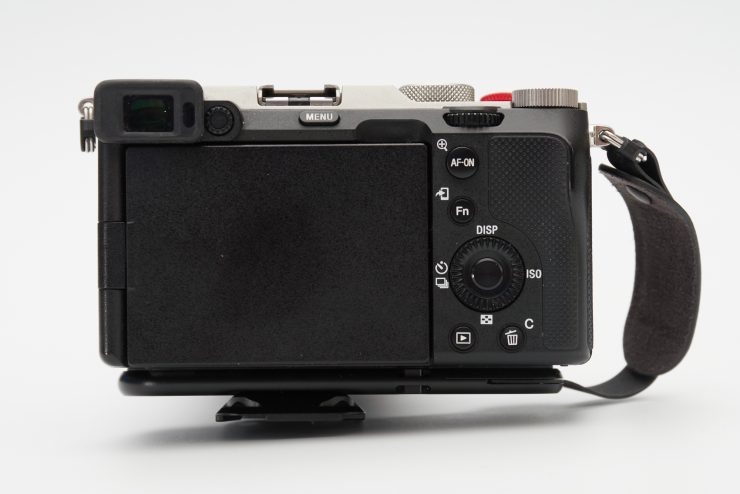
This design isn’t for everyone. The Micro Clutch is probably Peak Design’s most divisive product ever, mainly because of the large bottom plate covering the battery compartment. Over 11,000 Kickstarter backers suggests that despite this, the product fills a niche in the market. People who have used an L plate before probably wonder why some users are worried.
The beauty of the Peak Design system is that there are options. Adding another one is always welcome.
Price & Availability
Now that the Kickstarter period is over, the Micro Clutch is available for order directly from Peak Design (pay shipping), but also from your favorite retailers like Adorama (free shipping), and soon, of course, from Amazon. The Micro Clutch costs about $65, and is available with an L-plate or I-plate base to fit the shape of your camera.

